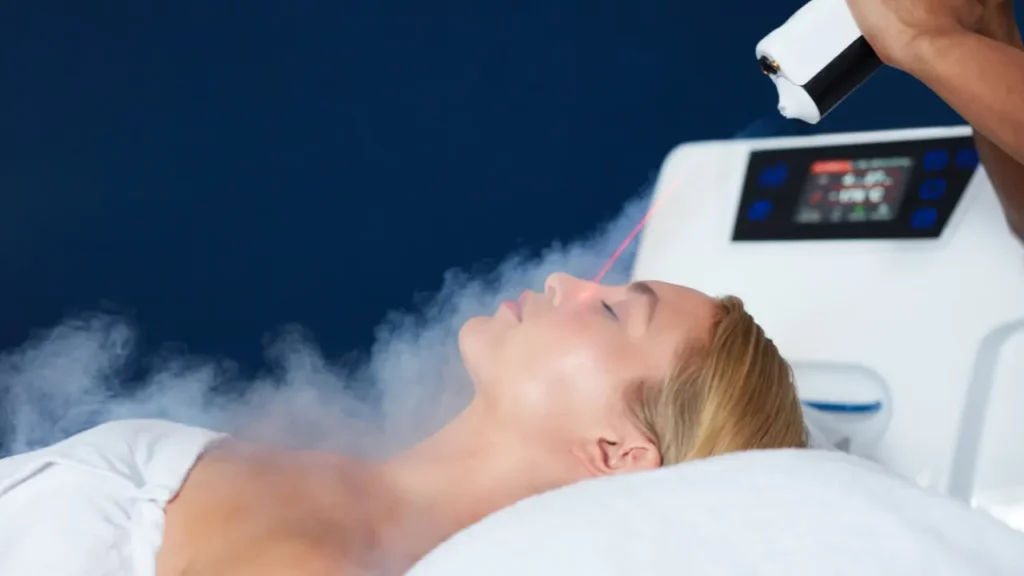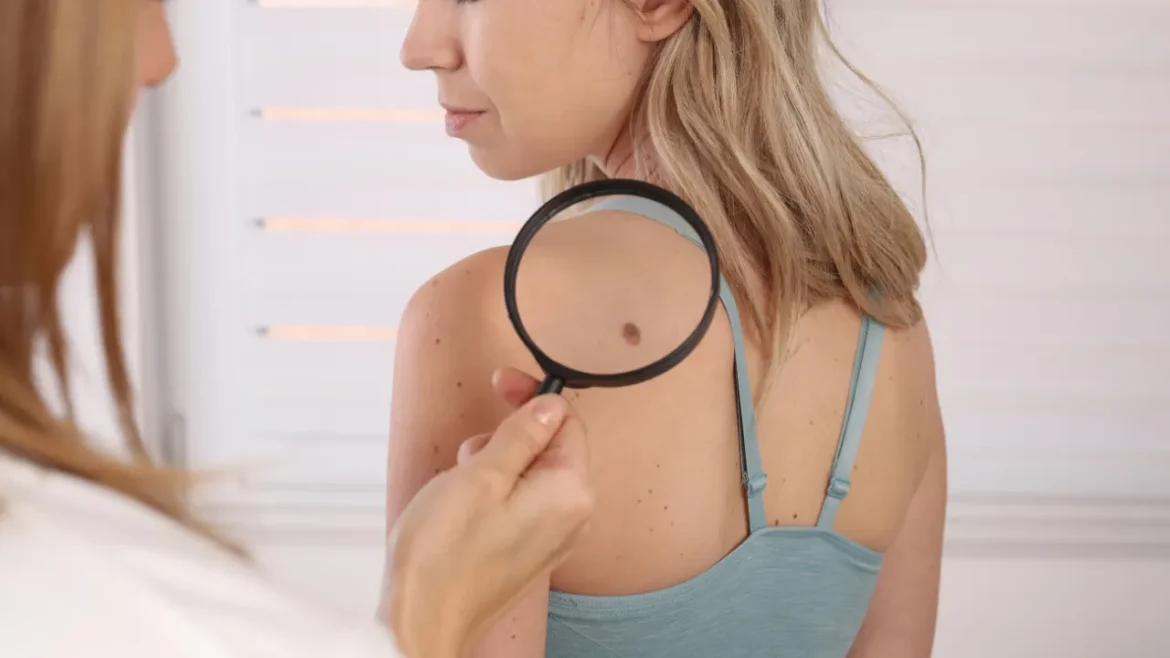Description
Skin tags are small, tender, flesh-colored, or brownish growths that often protrude from the skin. They are additionally referred to as cutaneous papillomas or acrochordons. They are made up of blood vessels, extracellular matrix, and the underlying skin tissue. Although skin tags are typically not harmful, some people may find them unpleasant or ugly. Skin tags frequently develop on the armpits, neck, eyelids, crotch, and underneath the breasts, as well as other places where the skin creases or rubs up against itself. They normally have a slender stalk that connects them to the surface of the skin and is minuscule, measuring only some millimeters to several centimeters. Unless they get irritated or disturbed, skin tags do not cause pain.
You May Also Like:
FINDING THE BEST TURKEY TAIL MUSHROOM POWDER: 5 TOP BRANDS REVIEWED
FINDING THE BEST LION’S MANE MUSHROOM SUPPLEMENT: 5 TOP BRANDS REVIEWED
Skin tags: Description, Causes, and Treatment Protocol is an original (HealthXWire) article.
Possible Causes
Skin tags can form for a variety of reasons but the specific pathway of development is not entirely understood. The reasons consist of:
Skin Irritation from Friction: Skin tags may arise because of, persistent friction or rubbing between skin surfaces. People who have become overweight or possess skin creases that constantly touch will usually experience this.
Hormonal Changes: Skin tags can develop as a result of hormonal abnormalities, like those that can occur while pregnant or in those suffering from polycystic ovary syndrome (PCOS).
Genetic Predisposition: Skin tag development may be genetically predisposed in some people, according to studies.
Exacerbating and Mitigating Factors
The formation and development of skin tags might be influenced by aggravating and mitigating variables. Understanding these elements can aid people in managing or avoiding skin tags. Following are a few things that can make skin tags increasingly prevalent or less common: –
Skin tags are made worse by the following factors: –
Obesity: The likelihood of acquiring skin tags rises with weight or obesity. Skin tags can develop more easily when there is more skin-to-skin contact and rubbing caused by excess weight.
Skin Irritation Caused by Friction: Frequently, skin tags develop in places where the skin covering rubs against itself or with clothing, causing friction and irritability. The friction causes skin tags more likely to develop. Overweight people or those with skin creases that constantly brush against one another usually exhibit this.
Age: Age increases the frequency of skin tags. They are frequently seen in elderly and middle-aged individuals. Although the precise cause of this linkage is unclear, it could be attributed to numerous variables including hormonal changes, greater friction, and hereditary predisposition.
Hormonal Changes: The development of skin tags has been linked to hormonal variations, such as those that take place when pregnant or in people who have disorders such as polycystic ovary syndrome (PCOS). Skin tags may grow due to, hormonal abnormalities.
Skin tags can be mitigated by the following factors: –
Healthy Body Weight Maintenance: The chances of acquiring skin tags can be lowered by maintaining a healthy weight via a nutritious diet and daily exercise.
Proper Hygiene: Ensuring proper hygiene can help lessen friction and itch, especially in regions where skin tags are more likely to grow and hence reducing skin tags.
Avoiding Tight Clothing: Skin tags are less likely to form if you wear loose-fitting clothing which does not rub or provide unnecessary friction between skin surfaces.
Hormonal Management: Controlling hormonal imbalances by proper medical interventions, as suggested by medical professionals, might decrease the possibility of getting skin tags.
Regular Skin Care: Regular skin care routines, like moisturizing and exfoliating, can assist to maintain healthy skin and may even lower the risk of developing skin tags.

Standard Treatment Protocol
The usual course of action for treating skin tags entails the excision—or removal—of the skin tag. Several techniques regularly employed are as follows: –
Excision: Following local anesthetic, the skin tag will be removed at its base using scissors or a scalpel. A medical expert could carry out this quick and reasonably easy treatment.
Cauterization: Cauterization entails utilizing heat or electricity to burn away the skin tags. This technique removes skin tags efficiently, but it may leave some scars or short-term skin discoloration.
Cryotherapy: Applying liquid nitrogen to the skin tag causes it to freeze up and eventually peel away within some days of treatment, which is known as cryotherapy. This approach is often tolerated well and is less intrusive. On the other hand, the treatment location may experience brief discomfort or blistering.
Ligation: Ligation includes the process of tightly wrapping the foundation of a skin tag with dental floss or a thin surgical thread. As a result, the skin tag loses its blood supply, withers, and then falls off. The skin tag might require some days to weeks to separate after ligation, despite being a straightforward and affordable procedure.


Treatment Options
Several adjunct therapy alternatives can be brought into account along with the usual treatment regimen to increase the effectiveness of traditional treatment. The scientific proof of the usefulness of some of these choices is minimal, and they might not be suitable for everyone, despite anecdotal reports that they work. It is advised to speak with a healthcare provider before attempting these adjunct therapies. These are a few examples of adjunctive therapies: –
Prescription Medications: To minimize the size or visibility of skin tags, some prescription drugs may be applied topically. These could include corticosteroids like betamethasone or retinoids like tretinoin. These drugs function by lowering inflammation and enhancing cell renewal. Nevertheless, a healthcare provider should supervise their application.
Over-the-Counter Formulations: Skin tags may be removed using over-the-counter topical treatments with substances such as tea tree oil or salicylic acid. The product’s directions must be strictly followed, and use should be stopped if any irritability develops.
Nutritional Supplements: Despite the paucity of scientific research directly addressing the utilization of dietary supplements for the treatment of skin tags, some supplements have been proposed to offer potential advantages for skin health. It is vital to remember that these supplements ought to be used in conjunction with other therapies, not as a substitute for them. Following are some dietary supplements that are linked to improved skin health and could be: –
- Vitamin E
Antioxidant vitamin E might improve the health of the skin. It is offered as a supplement or can be acquired through a healthy diet full of foods like seeds, nuts, and vegetable oils. Although vitamin E may have advantages for the health of the skin, little research has been done on how it directly affects skin tags.
- Garlic Extract
The possible antioxidant and anti-inflammatory effects of garlic have been acknowledged. Garlic extract applied topically to skin tags has been said to help reduce their size by some users. There is not enough scientific research, though, to back up its effectiveness in treating skin tags.
- Omega-3 Fatty Acids
Fish oil supplements frequently contain omega-3 fatty acids, which are believed to possess anti-inflammatory qualities and improve the general health of the skin. Omega-3 fatty acid supplementation or dietary intake may enhance skin health even though it has not been particularly researched for skin tags.
However, it is vital to keep in mind that dietary supplements could combine with prescription drugs or cause unwanted consequences. Before beginning any supplement program, it is advised to speak with a healthcare provider, especially if someone has underlying medical issues or is taking medicines.
Natural and Herbal Remedies: For the treatment of skin tags, some people might want to look into natural or herbal options. These could consist of: –
- Apple Cider Vinegar
A cotton ball dipped in apple cider vinegar applied to the skin tags many times each day might aid in its reduction. Yet, people should proceed with caution because vinegar can burn their skin or irritate it.
- Baking Soda Paste
The skin tag might eventually disappear if baking soda and water are combined to make a paste, which is then applied to the skin tag. In the event of any negative reactions, it is advised to stop using the product.
- Essential Oils
The ability to decrease skin tags is thought to be possessed by some essential oils, including lavender and frankincense. Skin tags may be treated topically by dilution of these oils. When utilizing essential oils, it is essential to exercise with caution because some people may have skin sensitivity.
Nevertheless, it is critical to keep in mind that self-care or utilization of complementary therapies should only be done under careful consideration. For the sake of the security and efficiency of any skin tag treatment approach, it is always advised to speak with a healthcare professional. This will also help with correct diagnosis and treatment advice.


Conclusion
Skin tags are benign skin growths characterized by small, soft, and often pedunculated protrusions and they are normally found in skin creases. Skin tags may arise from friction, hormonal changes, or genetic predisposition. While skin tags are generally harmless, their presence can cause cosmetic concerns or discomfort due to their location. There are also exacerbating factors that worsen the condition of existing skin tags which are obesity and age. To mitigate the effects of skin tags, it is important to maintain a healthy body weight, have good hygiene, and avoid tight clothing to prevent friction.
Skin tags can be treated by surgically removing the growth or by burning or freezing the growth. Medications and nutritional supplements can give great support in helping the body heal from skin tags too. Overall, even though skin tags are generally considered harmless, seeking professional guidance for their evaluation, removal, and post-treatment care ensures optimal outcomes and patient satisfaction.


Additional resources for further reference
https://www.ncbi.nlm.nih.gov/books/NBK547724/
https://www.aad.org/public/diseases/a-z/skin-tags
https://www.healthline.com/health/skin-tag-removal
https://my.clevelandclinic.org/health/diseases/21528-skin-tags-acrochordons
Important Note: The information contained in this article is for general informational purposes only, and should not be construed as health or medical advice, nor is it intended to diagnose, prevent, treat, or cure any disease or health condition. Before embarking on any diet, fitness regimen, or program of nutritional supplementation, it is advisable to consult your healthcare professional in order to determine its safety and probable efficacy in terms of your individual state of health.
Regarding Nutritional Supplements Or Other Non-Prescription Health Products: If any nutritional supplements or other non-prescription health products are mentioned in the foregoing article, any claims or statements made about them have not been evaluated by the U.S. Food and Drug Administration, and such nutritional supplements or other health products are not intended to diagnose, treat, cure, or prevent any disease.
Table of Contents


